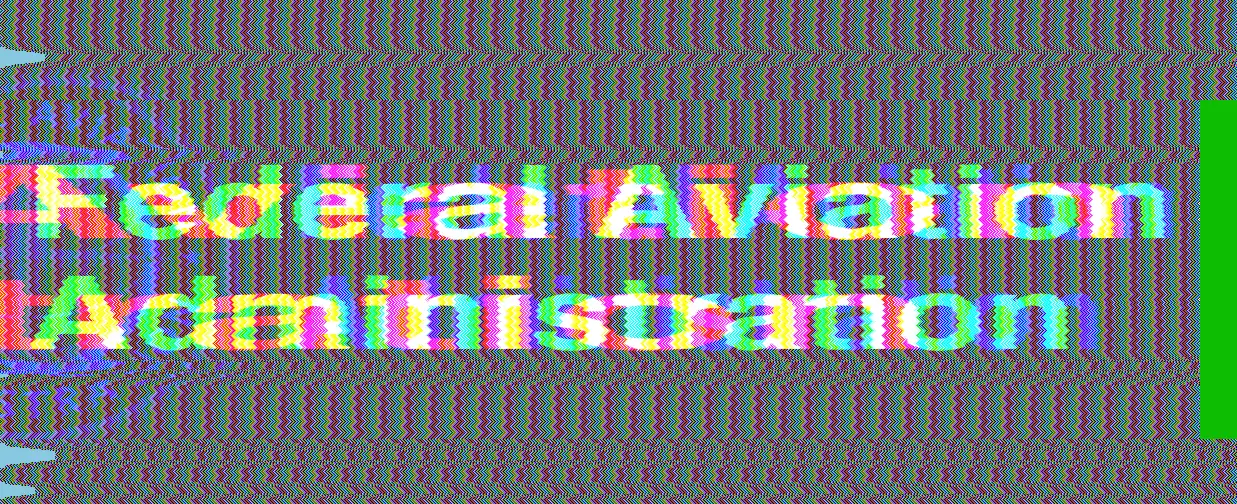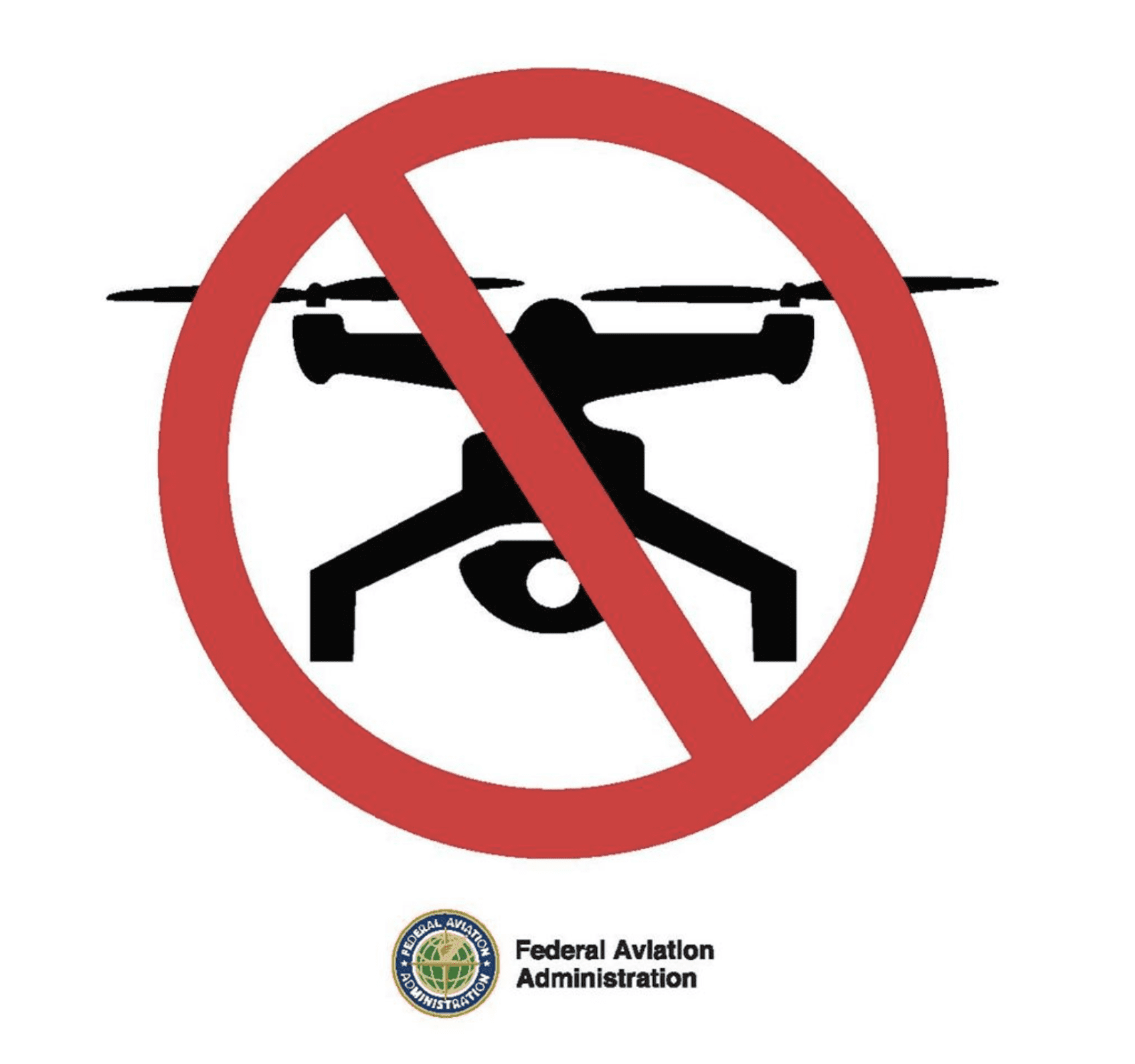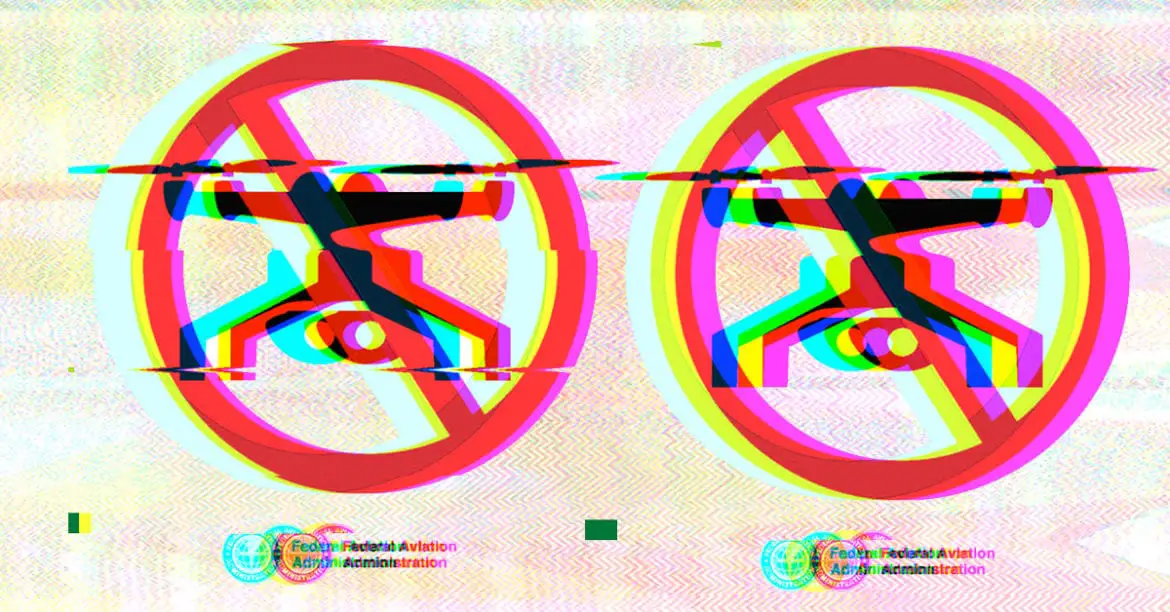Kids these days . . . playing in the airspace.
Who owns the air you’re breathing right now? If you were 60 feet above your current location, would you be trespassing?
Until about 2010, most people lived thoroughly two-dimensional lives. Sure, an orthodontist with a Cessna might have to worry about airspace violations, but the general public was more or less limited to coordinates of the X & Y variety.
But access to Z came when radio-control hobbyists started cannibalizing their Nintendo controllers for gyros and accelerometers. They’d break apart CCTV cameras for image sensors. A lot of work and collaboration between a lot of earnest and dedicated geeks thus spawned a new class of criminal: people with toy helicopters.
Over the next few years, the explosive popularity of drones incited a backlash that closely paralleled the rash of skateboard bans in the 1990s. Cities, universities, parks, stadiums and businesses soon began banning drones in their airspace, and FAA drone registration would soon begin.

Enter the Federal Aviation Administration
In 2013, much of the building tension came to a head when the Federal Aviation Administration fined drone builder and pilot, Raphael “Trappy” Pirker, $10,000 for flying around the University of Virginia. The fact that the University of Virginia was paying him for the video he was capturing only compounded the severity of his crime, according to the FAA, since as of 2007, any and all commercial use of drones was strictly forbidden. Trappy’s lawyers argued that the FAA had no jurisdiction over drones, since radio controlled model aircraft were excepted under FAA guidelines and in most cases, including this one, weren’t flown in navigable airspace where they’d run the risk of encountering manned aircraft.
In 2015, Trappy settled for a small portion of the original fine, leaving the question of the FAA’s jurisdiction over drone pilots murky. In the interim, the FAA had been sending out cease-and-desist letters to any pilots they could find who were making money flying with their feet on the ground. Everyone from real estate photographers to search and rescue teams to a guy in Louisiana who collected bounties on feral hogs by hunting them with a drone-mounted thermal camera got shut down. This raised a lot of questions—did folks getting ad revenue for videos reviewing drone tech on the internet fall under the ban? What about sponsored team pilots in freestyle or racing events?
The silver lining was that, whatever the bans might be regarding commercial use, people who flew just for the joy of leaving their body and winging through the air weren’t getting shut down anytime soon. A 2012 law prevented the FAA from making any rules regarding recreational model flight.
RELATED: Consumer-Grade Anarchy

December 2015 — FAA drone registration is mandatory
Everything changed in December of 2015. The FAA issued a press release stating that all unmanned aircraft over 249 grams would have to be registered with their agency. This means that since then, you can jump in a single-seater ultralight with a snowmobile engine and fly to your heart’s content with less government oversight than you need for a styrofoam glider that weighs half as much as a football.
The idea was that if you found a drone, its registration number would let you trace it back to its owner—whether you were just being neighborly and returning a downed miniquad or, alternately, investigating a midair collision.
It didn’t really work out that way. To this day, there’s no way to search for a drone’s owner by their registration number the way you can look up ham radio operators by their callsigns. Enforcement of drone registration has been essentially nonexistent, and even commercial drone operators rarely bother registering their aircraft.
Sweeping changes require virtually all drones to have tracking beacons
In May of this year, the FAA announced that they’d be going much, much further, requiring all drones over 249g to have active transmitters detectable by manned aircraft and to have their location constantly reported over the internet to a tracking website.
Keep in mind, plenty of real, manned aircraft—not just tiny single-seaters, even, but crop dusters and passenger airplanes—fly “NORDO”, without any communication equipment whatsoever, and it’s completely legal outside of class-C airspace.The technology requirements for the new tracking systems will be developed by disinterested companies with absolutely no skin in the game like Amazon, Airbus, and Wing (owned by Google’s parent company Alphabet).
So if your idea of after-work fun is running battery packs through a 250-scale racing quad in a vacant parking structure with no GPS or cell signal, congratulations. You’re about to be an outlaw again—if you haven’t been this whole time.
The FAA regulations state that it’s only legal to fly a drone within line-of-sight and 400 feet of ground level. That 400 foot number may sound arbitrary, but it’s based in large part on a 1946 Supreme Court case where a farmer claimed low-flying Army airplanes were driving his chickens into fits of suicidal panic. Exact numbers have fluctuated up and down, but since that case it’s been a general guideline that manned aircraft stay above 500 feet unless taking off or landing. If flying a drone at legal altitudes, it is therefore recommended to look out for and avoid particularly anxious-looking chickens.

